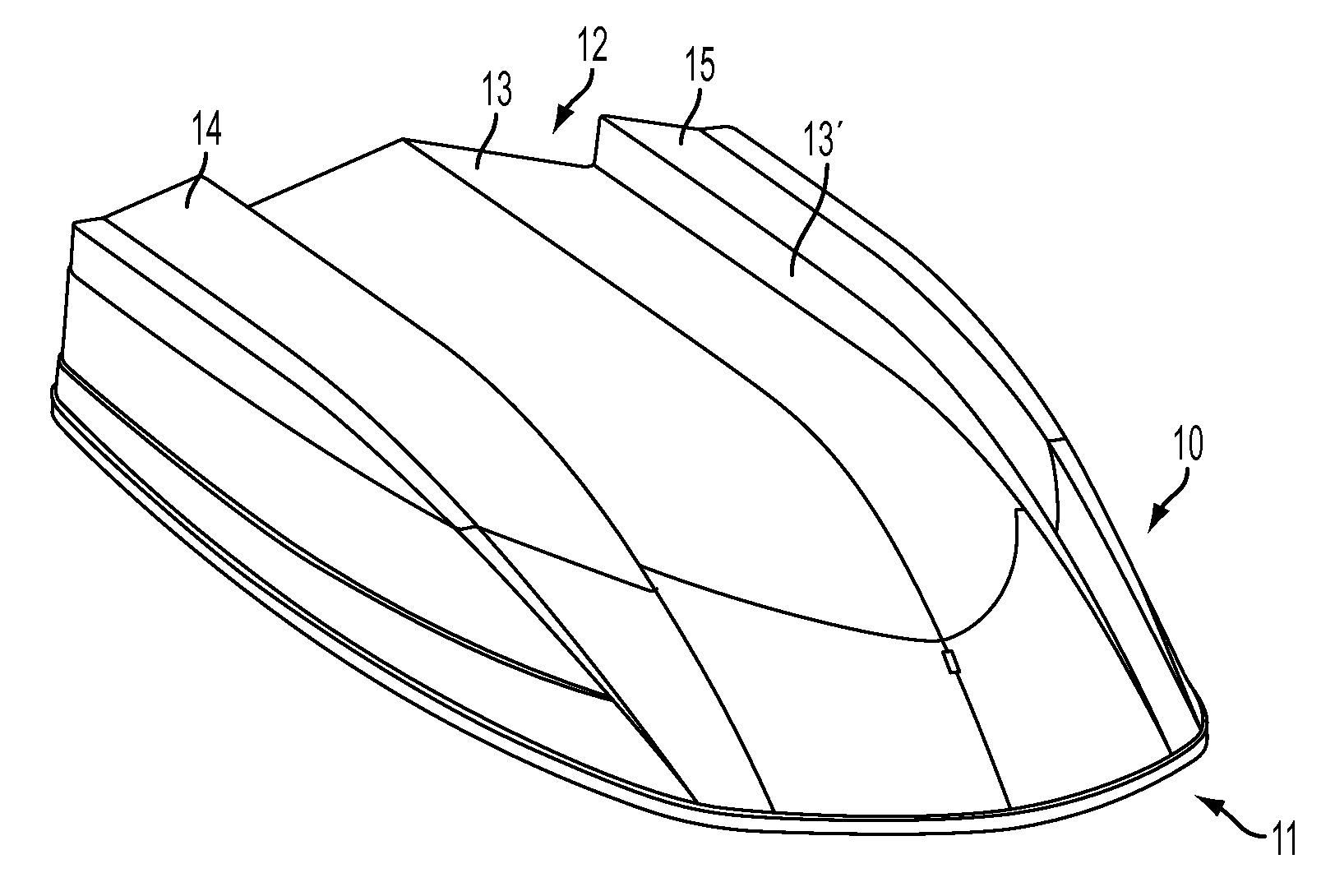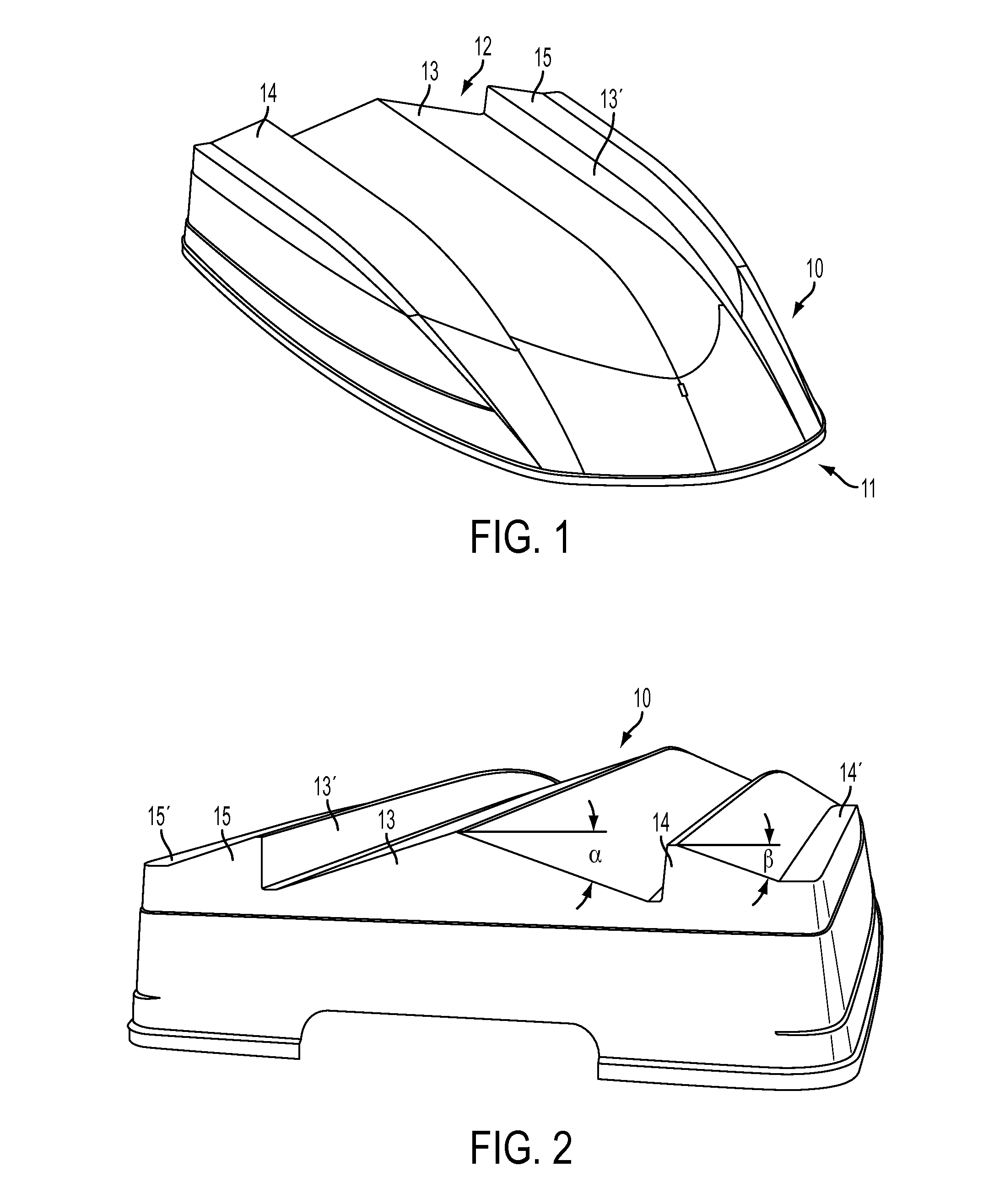Hybrid monohull planing vessels
a monohull and planing technology, applied in the field of hybrid hull forms of monohull planing vessels, can solve the problems of uncomfortable maneuverability, reduced noise, and inability to move in line, and achieve the effect of increasing beam, improving stability, and optimizing speed and handling characteristics
- Summary
- Abstract
- Description
- Claims
- Application Information
AI Technical Summary
Benefits of technology
Problems solved by technology
Method used
Image
Examples
Embodiment Construction
[0033]With reference to FIG. 1, a perspective view of one embodiment of the hybrid hull form is shown. Hull form 10 generally comprises a bow section 11 and a stern section 12. The hull form 10 includes a generally V-shaped center section 13 and bi-lateral opposing semi-sponsons 14 and 15. As shown in FIG. 1, in some embodiments the V-shaped center section 13 comprises a traditional V-shaped hull configuration extending substantially the entire length of the hull form 10 from bow section 11 to stern section 12, substantially along the centerline thereof. The semi-sponsons 14 and 15 are disposed on either side of the center section 13 and extend the entire length of the hull form 10, substantially parallel with the V-shaped center section 13, to enhance the stability of the hull form 10. The semi-sponsons 14 and 15 are, in some embodiments, elongated projections extending away from the hull form 10 and center section 13 to expand the dimensions of the hull form 10 at or below the wat...
PUM
| Property | Measurement | Unit |
|---|---|---|
| deadrise angle | aaaaa | aaaaa |
| sponson deadrise angle | aaaaa | aaaaa |
| length | aaaaa | aaaaa |
Abstract
Description
Claims
Application Information
 Login to View More
Login to View More - R&D
- Intellectual Property
- Life Sciences
- Materials
- Tech Scout
- Unparalleled Data Quality
- Higher Quality Content
- 60% Fewer Hallucinations
Browse by: Latest US Patents, China's latest patents, Technical Efficacy Thesaurus, Application Domain, Technology Topic, Popular Technical Reports.
© 2025 PatSnap. All rights reserved.Legal|Privacy policy|Modern Slavery Act Transparency Statement|Sitemap|About US| Contact US: help@patsnap.com



